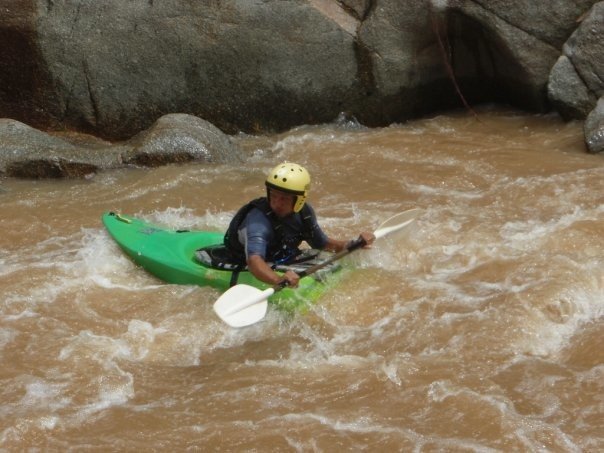“Siao ah?”
“That’s so dangerous!”
“That’s impossible!”
Those were some of the comments I received when people found out I had plans to ride a bicycle to Malacca (and back!).
As someone who’s been participating in “adventure sports” for more than a decade, being on the receiving end of comments like these is a fairly regular occurrence. Despite the annoying comments, I’ve learnt a few valuable lessons that I’ve brought over to the working world.
Lesson 1: Don’t be trapped by dogma
Over time, I started to realize that people are generally quite content to avoid risk. But the risks adventurers take are calculated and the potential of a catastrophic failure is what makes completing such adventures so rewarding.
If you’re guaranteed success, there is no sense of accomplishment. It’s like playing a video game with God mode on in the easiest setting. The struggle (or challenge) is what gives the adventure meaning, at least to me.
As you return from more and more adventures unscathed, you become less affected by the naysayers. But not because you’ve become better at ignoring them, but rather, you start to understand that they’re merely projecting their fears and limitations on you.
Once you realize this, it’s like breaking free from the shackles of fear and mediocrity. You start to define your own limits, and you do that by pushing your limits to discover where they are.
Lesson 2: Handling risks
To paraphrase what someone once told me: “In a game of tennis, if you make a mistake, you lose a point, or even the game. But when you partake in adventure sports, a mistake could cost you your life and that’s what makes things interesting.”

I’m not advocating for us to go out and put ourselves in risky situations. Many of us who go on such adventures have a system for managing risks. In thinking about risks, we learn that there are usually four main ways to deal with risks that we identify.
4 ways of handling risks
- Avoid – Change your plan/route/itinerary to remove the risk
- Control – Take steps to mitigate or reduce the impact of the risk
- Accept – Just accept it. Some risks can’t be mitigated or avoided in a meaningful way
- Transfer – Pay a reputable vendor to manage and take responsibility
I won’t go into the details of each because I want to focus on two points.
Firstly, there are alternatives to simply avoiding the risk. However, when it comes to managing risks, the go-to option for many people is to avoid. But if we were to avoid all risks, we’d have to live in a bubble with a controlled atmosphere.
The second point can be difficult to accept. It’s the fact that you sometimes accept risks, not because you’re engaging in risky behaviour, but because there is no meaningful way that you can avoid or mitigate the impact of the risk.
Lesson 3: Knowing when to quit
There’s a lot of machismo when it comes to adventure sports, but true adventurers know when to quit. They’re aware of their own limitations, are able to handle the risks and have the maturity to know that today is just not their day.
They may deem the mountain biking trail a bit too gnarly, the weather too harsh to safely summit a mountain or acknowledge that their own physical state is just not good enough that day.
Transferring the lessons to my work context

The many initiatives I’ve pushed for are largely an application of Lesson 1: Don’t be trapped by dogma. In business terms, it means rejecting the status quo, looking critically and below the surface when people tell you that it’s always been done this way.
When it comes to launching new initiatives, there’s always an element of risk. The risks are not just in the probability of success, but also personal risk as I potentially become remembered as the guy who failed.
“Even something as simple as taking initiative is a risk because you’re doing something without explicit instructions from management.”
Even something as simple as taking initiative is a risk because you’re doing something without explicit instructions from management. If anything goes wrong, you cannot simply push the accountability away by claiming you were merely following instructions. While the average zombie worker would stick to avoiding risk and doing what has always been done, that is setting on the path of obsolescence and mediocrity. Avoiding all risks means only making safe, average products for the average masses.
Now, this is where Lesson 2: Handling risks, can be applied. Taking calculated risks to come up with a bold product or marketing campaign that sets you apart from the average removes the need to compete only on price.
Lesson 3: Knowing when to quit is a tough one to apply both in the outdoors and in the boardroom. Resources are often finite, we have only so much energy, time and money. Relentlessly pushing an initiative to management is going to drain you, eventually leading to burnout. I remember trying to push for the adoption of a CRM system at my workplace in November 2017, but that didn’t yield any results, so I kept it on the back burner.
About 6 months later, management started casually discussing ways of tracking conversions. I jumped on the opportunity to push my initiative again and managed to get it through. Sure, it could have happened a lot earlier if I had constantly pushed for it, but that’s a big gamble. In the 6 months where I stopped pushing for the CRM initiative, I poured my time and effort into other initiatives that were successfully adopted.
This article was first posted on Linkedin

